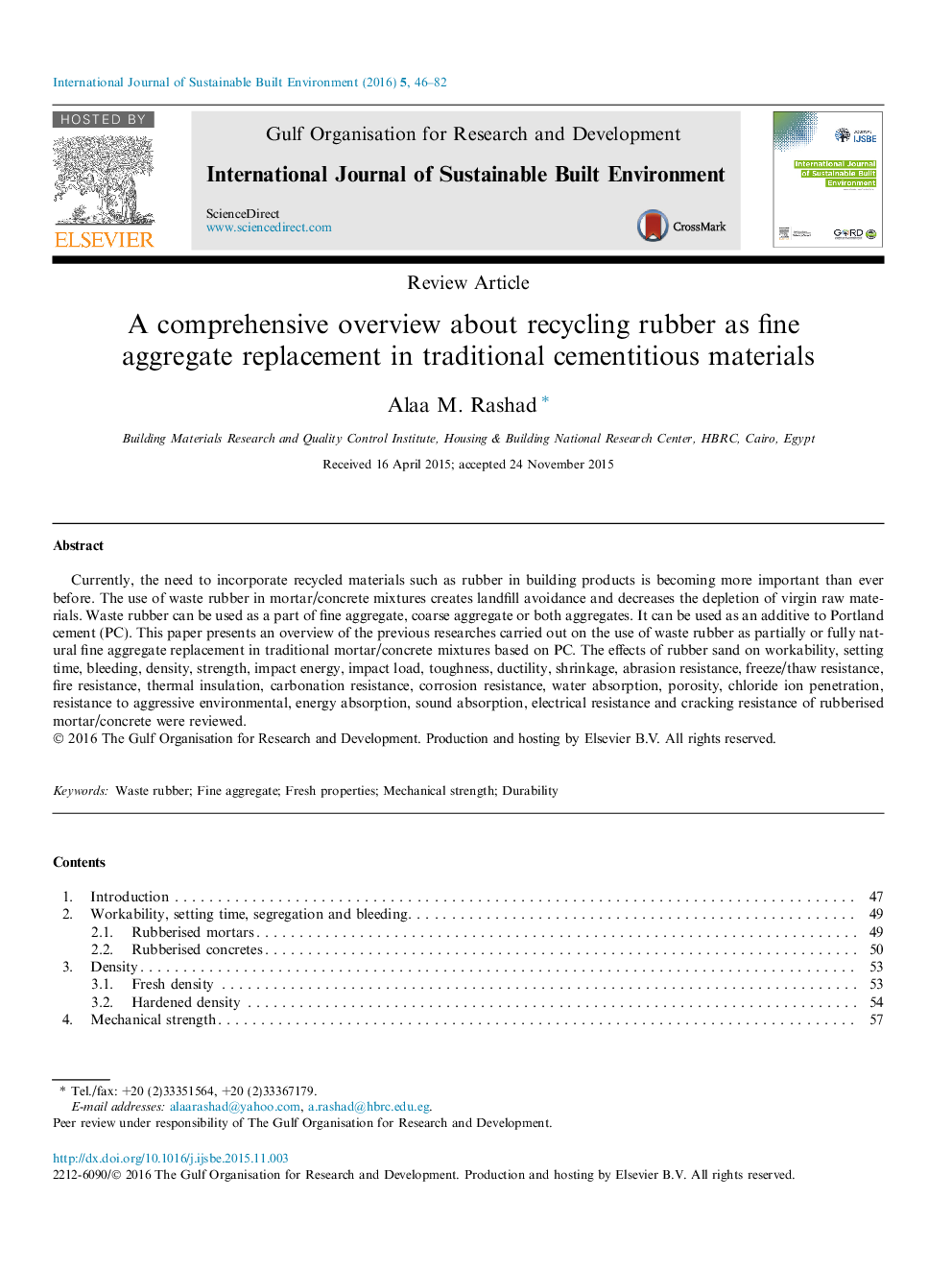| Article ID | Journal | Published Year | Pages | File Type |
|---|---|---|---|---|
| 214743 | International Journal of Sustainable Built Environment | 2016 | 37 Pages |
Currently, the need to incorporate recycled materials such as rubber in building products is becoming more important than ever before. The use of waste rubber in mortar/concrete mixtures creates landfill avoidance and decreases the depletion of virgin raw materials. Waste rubber can be used as a part of fine aggregate, coarse aggregate or both aggregates. It can be used as an additive to Portland cement (PC). This paper presents an overview of the previous researches carried out on the use of waste rubber as partially or fully natural fine aggregate replacement in traditional mortar/concrete mixtures based on PC. The effects of rubber sand on workability, setting time, bleeding, density, strength, impact energy, impact load, toughness, ductility, shrinkage, abrasion resistance, freeze/thaw resistance, fire resistance, thermal insulation, carbonation resistance, corrosion resistance, water absorption, porosity, chloride ion penetration, resistance to aggressive environmental, energy absorption, sound absorption, electrical resistance and cracking resistance of rubberised mortar/concrete were reviewed.
